AACR:药物CLR1404能够检测和治疗恶性肿瘤和某些癌干细胞
2012-04-10 towersimper 生物谷
图片来自Christine E. Eyler et al. Glioma Stem Cell Proliferation and Tumor Growth Are Promoted by Nitric Oxide Synthase-2, Cell, Volume 146, Issue 1, 53-66, 8 July 2011, DOI:10.1016/j.cell.2011.06.006. C

图片来自Christine E. Eyler et al. Glioma Stem Cell Proliferation and Tumor Growth Are Promoted by Nitric Oxide Synthase-2, Cell, Volume 146, Issue 1, 53-66, 8 July 2011, DOI:10.1016/j.cell.2011.06.006.
Copyright ©版权Bioon.com所有,若未得到生物谷授权,请勿转载。
2012年3月31日-4月4日在芝加哥市举行的美国癌症研究协会(American Association for Cancer Research, AACR)年度会议上,来自美国威斯康星大学麦迪逊分校医学与公共卫生学院放射学副教授Jamey Weichert博士和他的同事们描述了一种药物CLR1404能够显影和破坏很多种恶性肿瘤和一种癌干细胞类型。
威斯康星大学医院门诊综合脑瘤项目主任和医学与公共卫生学院癌干细胞科学家John Kuo博士,正在研究利用药物CLR1404靶向多形性胶质母细胞瘤(glioblastoma multiforme, GBM)干细胞是否能够治疗这种致命性的脑瘤。
在第一项实验中,Kuo和Weichert描述了CLR1404如何降低GBM干细胞活性,抑制GBM生长并改善GBM模式动物存活。
第二项实验表明用于正电子发射断层扫描成像(PET imaging)的药物CLR1404含有一种放射性同位素碘-124,能够显著性地和选择性成像小鼠中的恶性肿瘤,并且详细地描述了这种药物如何实现这种功能。
第三项实验解释用另一种放射性元素碘-131标记的药物CLR1404作为一种放射治疗试剂,能够让肿瘤萎缩,并且让人类癌症模式动物寿命延长10年以上。
只需一次注射,含有碘-124的CLR1404就进入血液中,选择性地进入恶性肿瘤而不是正常组织内部。10天之后,这种药物除了在恶性肿瘤细胞存在外,就不在体内存在。CLR1404在原发性恶性肿瘤和转移瘤中堆积,但在良性肿瘤中不积累。
Weichert说,“我们发现癌细胞通过脂筏(lipid raft)来摄取CLR1404,而且相比于正常细胞,癌细胞含有更加丰富的脂筏。”
碘-131标记的药物CLR1404也能够选择性地靶向癌细胞。在进行一次注射后,癌细胞接受来自细胞内的持续性致死放射线辐射,而正常组织相对而言则不受到伤害。
Weichert'领导的研究小组在多种恶性肿瘤如肺癌、肾癌、结肠癌、卵巢癌、子宫癌、胰腺癌、前列腺癌和三阴性乳腺癌中测试药物CLR1404的疗效。单次静脉注射能够显著性地抑制肿瘤生长,并延长这些癌症模式动物的寿命。
Kuo和Weichert也发现CLR1404也能够靶向和破坏癌干细胞。
Kuo说,“像大多数癌干细胞一样,GBM干细胞通常抵抗治疗,而且我们认为它们能够导致大脑中肿瘤复发。靶向GBM干细胞可能在改善病人治疗结果上发挥着关键性作用。”
Kuo将来自GBM患者的胶质瘤干细胞(glioma stem cell)移植到小鼠中,从而导致肿瘤在小鼠大脑中生长。当他注射基于CLR1404试剂的另一种诊断性物质CLR1501时,它进入胶质瘤干细胞中,并照射它们。即便是这种肿瘤从小鼠中移除并把胶质瘤干细胞再次分离时,这些胶质瘤干细胞依然发光,这就表明这种试剂能够延长滞留在它们内部。
Weichert说,“药物CLR1404在恶性肿瘤和癌干细胞中独特的延长滞留是这种药物发挥出诊断性和治疗性作用所必需的。”
Kuo领导的研究小组利用CLR1404处理体外培养的胶质瘤干细胞,发现它能够极大地降低这些干细胞的增殖和存活能力。当这些接受药物处理的胶质瘤干细胞移植到动物时,肿瘤生长受到抑制并且动物存活能力加强。
Kuo说,“癌细胞能够渗透进附近正常的脑部组织,这就限制了我们当前所采用的手术摘除、化疗和放疗治疗GBM的疗效性。CLR1404相关联的药物试剂在癌细胞中的特异性滞留提示着人们能够利用它们在细胞水平上潜在性地作为一种抗癌疗法,同时对正常脑细胞的伤害最小化。”
2003年,Weichert在Cellectar公司对药物CLR1404进行商品化销售。2011年Cellectar公司被Novelos Therapeutics公司收购。如今,Novelos Therapeutics公司正在基于CLR1404平台开发5种化合物。(生物谷:towersimper编译)
Copyright ©版权Bioon.com所有,若未得到生物谷授权,请勿转载。
One Compound Detects and Treats Malignant Tumors and Certain Cancer Stem Cells
Madison, Wisconsin - More than a decade of laboratory research at the University of Wisconsin has proven that a single chemical compound may both detect and treat malignant tumors and certain cancer stem cells.
In three posters presented at the annual meeting of the American Association for Cancer Research (AACR) in Chicago, March 31-April 4, UW-Madison researchers describe exciting advances involving CLR1404, described as a "diapeutic" agent that can both image and destroy a wide range of malignant tumors and the one type of cancer stem cells examined so far.
The presentations are based on basic research in the lab of Dr. Jamey Weichert, associate professor of radiology at the UW School of Medicine and Public Health (SMPH) and a member of the UW Carbone Cancer Center (CCC).
Clinicians at the UW School of Medicine and Public Health and elsewhere are interested in assessing CLR1404's potential. Several clinical trials evaluating both the cancer imaging and therapeutic capabilities of CLR1404 are under way at the Carbone Cancer Center, with more scheduled to begin soon.
Dr. John Kuo, director of the Comprehensive Brain Tumor Program at UW Hospital and Clinics and a cancer stem-cell scientist at the School of Medicine and Public Health, is studying the possibility of using CLR1404 to treat glioblastoma multiforme (GBM), a deadly form of brain cancer, by targeting GBM stem cells.
In one of the American Association for Cancer Research posters (#3495), Kuo and Weichert describe how CLR1404 decreases glioblastoma stem cell activity, suppresses GBM growth and improves animal survival.
Another poster (#5740) shows that the PET imaging version of CLR1404, which contains iodine-124, dramatically and selectively illuminates malignant tumors in mice. The poster details how the compound does this.
The third poster (#3831) explains how CLR1404 labeled instead with iodine-131 works as a radiotherapy agent to shrink tumors and extend life in more than 10 animal models of human cancer.
With one injection, iodine-124-containing CLR1404 enters the bloodstream and selectively penetrates and is retained by malignant tumors rather than normal tissues. After 10 days, the compound clears the body but remains in malignant tumor cells. CLR1404 accumulates in both primary malignant tumors and metastases, but not in benign tumors.
"We have found that CLR1404 is taken up by cancer cells through lipid rafts, which are much more abundant in cancer cells compared to normal cells," says Weichert.
Replacing iodine-124 with iodine-131 generates the radiotherapeutic version of CLR1404, which also selectively targets cancer cells. After a single injection, cancer cells are exposed to sustained lethal radiation from inside the cell, while normal tissues are relatively unharmed.
Weichert's team has tested the treatment in many different malignancies, including cancers of the lung, kidney, colon, ovary, uterus, pancreas, prostate, brain and breast, including the most difficult to treat, triple negative breast cancer. A single intravenous injection significantly suppressed tumor growth and extended the life of animals with these cancers.
In a collaborative effort between their two laboratories, Kuo and Weichert found that CLR1404 also targets and cripples cancer stem cells.
"Like most stem cells, GBM stem cells typically resist therapy, and we think they may cause tumors to recur in the brain," says Kuo, assistant professor of neurological surgery and human oncology at the School of Medicine and Public Health, and chair of the brain tumor group at the Carbone Cancer Center. "Targeting of GBM stem cells is probably critical for improving patient outcome."
Kuo implanted glioma stem cells from patients with GBM into mice - and tumors grew in their brains. When he injected another diagnostic form of the agent, CLR1501, it entered the stem cells and illuminated them. Even after the tumors were removed from the mice and the stem cells were isolated again, the pluripotent cells still glowed, indicating extended retention of the agent.
"This unique prolonged retention of the compound in malignant tumors and cancer stem cells is central to the diagnostic and therapeutic actions of CLR1404," says Weichert.
Kuo's team then treated the stem cells in culture with CLR1404 and found greatly reduced cell proliferation and survival. When the treated stem cells were implanted in animals, tumor growth was suppressed and animal survival increased.
"Infiltration of cancer cells into adjacent normal brain limits the efficacy of the surgery, radiation and chemotherapy we currently use to treat GBM," Kuo says. "Specific retention of CLR1404-related agents in cancer cells suggests its potential use as an anti-cancer therapy on the cellular level - especially for the invading cells that escape current therapies - while minimizing damage to normal brain cells."
Weichert commercialized CLR1404 in 2003 in a company called Cellectar, based in Madison, which merged with Novelos Therapeutics a year ago. Novelos, now based in Madison, is developing five compounds based on the CLR1404 platform.
Date Published: 04/03/2012
本网站所有内容来源注明为“梅斯医学”或“MedSci原创”的文字、图片和音视频资料,版权均属于梅斯医学所有。非经授权,任何媒体、网站或个人不得转载,授权转载时须注明来源为“梅斯医学”。其它来源的文章系转载文章,或“梅斯号”自媒体发布的文章,仅系出于传递更多信息之目的,本站仅负责审核内容合规,其内容不代表本站立场,本站不负责内容的准确性和版权。如果存在侵权、或不希望被转载的媒体或个人可与我们联系,我们将立即进行删除处理。
在此留言




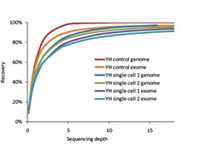

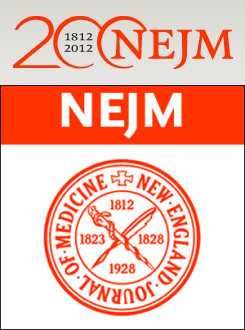
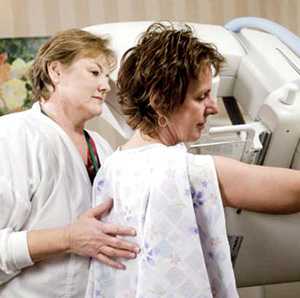
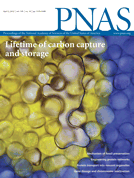
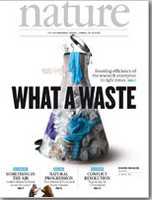




#ACR#
61
#癌干细胞#
53
#AACR#
55